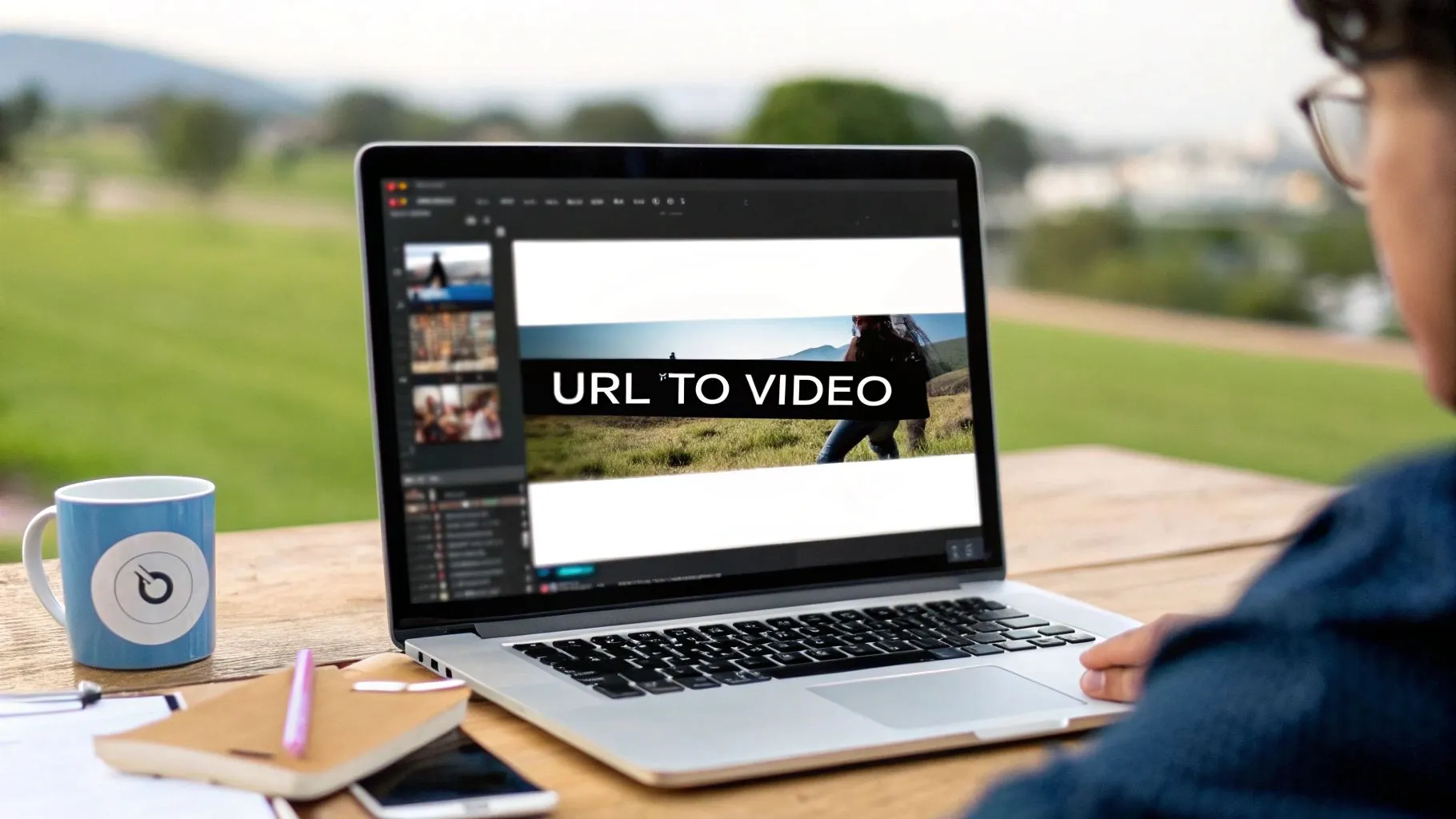From Link to Viral Clip: The Power of URL to Video Conversion
In the fast-moving world of digital content, attention is the most valuable currency. A single viral video can transform an unknown idea into a global trend overnight. Yet, creating content that resonates at scale often feels like a challenge, especially for creators and businesses that may not have the time or skills for advanced video editing.
This is where the process of URL to video conversion comes into play. Instead of starting from scratch, creators can now turn existing links—whether from blog posts, articles, or news stories—into engaging videos that are optimized for sharing.
Why URL to Video Conversion Matters
Videos dominate online platforms. Whether it’s social media, websites, or email marketing campaigns, video content consistently outperforms text and static images in engagement rates. But producing a professional-looking video from scratch requires time, creativity, and often a steep learning curve.
This is where a URL to video converter becomes valuable. Instead of manually turning written material into visuals, these tools automate the process, extracting key points and transforming them into engaging clips. Platforms like invideo AI have made this approach accessible to a wider range of creators, helping bridge the gap between long-form text and short, shareable videos.
URL to video conversion not only saves time but also ensures that valuable insights don’t get lost in endless text blocks. By quickly repurposing content into digestible clips, creators can extend their reach and meet audiences where they already spend time—on video-first platforms.
Turning Articles into Digestible Clips
Imagine you’ve written a 2,000-word blog post filled with helpful insights. While the content may be valuable, not every reader will commit to scrolling through the entire piece. A short video version of the blog—summarized and visually enhanced—can attract an audience that prefers watching over reading.
Boosting Reach Across Platforms
Social platforms like Instagram, TikTok, and YouTube Shorts are built for short-form content. By converting links into videos, creators can easily adapt long-form resources into platform-ready clips that expand their reach.
The Mechanics of URL to Video Conversion
How exactly does the process work? While the backend can be complex, the user experience is usually simple.
- Paste the Link – The creator copies a URL of the blog, article, or webpage they want to convert.
- Automatic Content Extraction – The system pulls in the text, images, and structure from the link.
- Script Generation – Key points are condensed into a readable, voiceover-friendly script.
- Visual Mapping – Relevant visuals, animations, or stock clips are matched with the script.
- Final Customization – The user can adjust tone, pacing, or visuals to ensure the video fits their style.
By combining automation with personalization, this method balances speed and creativity.
Benefits of Using an URL to Video Converter
Saves Time and Effort
Traditional video editing often requires hours of work. With conversion tools, that process can shrink to minutes, allowing creators to focus more on distribution and engagement.
Consistency Across Content Formats
Businesses often struggle to maintain consistency between written and visual content. Conversion tools ensure that every blog, case study, or press release can have a corresponding video that carries the same message.
Accessibility and Audience Preference
Not everyone consumes information the same way. While some prefer long-form articles, others prefer bite-sized videos. Offering both formats widens reach and improves inclusivity.
SEO and Discoverability
Video versions of written content can rank on search engines and video platforms, doubling visibility. Pairing blog SEO with video SEO often leads to stronger organic reach.
The Viral Potential of Link-Based Videos
The real power of URL to video conversion isn’t just efficiency—it’s virality. By transforming static content into engaging visuals, creators dramatically increase the chances of their message spreading.
The Psychology of Video Virality
Viral videos often share a few traits: emotional pull, relatability, and easy shareability. A blog might capture emotion in words, but video can amplify it with tone, visuals, and pacing that text alone can’t achieve.
Cross-Platform Distribution
One of the main advantages of creating a video from a link is its adaptability. A single blog post could become:
- A 60-second TikTok explainer
- A two-minute LinkedIn summary
- A five-minute YouTube deep dive
By tailoring one piece of content for multiple platforms, creators multiply their chances of going viral.
Challenges in URL to Video Conversion
While the process is powerful, it’s not without challenges.
Loss of Context
Not every article translates perfectly into a video. Some content requires nuance or depth that may be hard to capture in a short clip.
Over-Automation Risks
Relying too heavily on automation can lead to generic videos that feel repetitive. A balance between machine efficiency and human creativity is key.
Content Ownership
Converting a URL doesn’t automatically mean the content is free to use. Creators need to respect copyrights and ensure they are repurposing material they own or have permission to use.
How Businesses Can Leverage Link-to-Video Strategies
Businesses stand to gain the most from this shift. From marketing to training, URL to video conversion has practical applications.
Marketing Campaigns
A product blog can be repurposed into a promo video, making it easier to capture attention on social media ads.
Internal Communication
Instead of long email updates, companies can share quick video summaries generated from internal reports or documents.
Thought Leadership
Executives writing articles on industry trends can quickly turn them into engaging video commentary, boosting their credibility across professional networks.
Using AI to Enhance URL to Video Conversion
Artificial intelligence is the backbone of this process. It enables automated scriptwriting, intelligent scene matching, and even voiceover generation.
Here, tools like an AI video maker app step in to give users more creative control. These apps allow for advanced editing, voice customization, and dynamic effects layered on top of automated drafts. Instead of producing cookie-cutter clips, creators can add unique flair to stand out in crowded feeds.
Practical Tips for Making Viral Videos from Links
If you’re looking to transform links into viral clips, here are some best practices:
Focus on the Hook
The first 3–5 seconds determine whether someone keeps watching. Pull the most exciting insight from your link and place it right at the start.
Keep It Concise
Aim for clarity over complexity. A single link can yield multiple short videos, each focusing on one powerful idea.
Add Subtitles and Captions
Many users watch videos without sound, especially on mobile. Captions ensure accessibility and better engagement.
Optimize for Each Platform
A video designed for TikTok may not perform well on LinkedIn. Adjust formats, aspect ratios, and messaging accordingly.
Inject Personality
Even with automation, your voice and perspective matter. Add commentary, branding, or humor to make the video feel uniquely yours.
The Future of URL to Video Conversion
As AI continues to evolve, URL to video technology will only become more advanced. We can expect:
- Smarter summarization – Better extraction of the most impactful points.
- Real-time adaptation – Instant conversion for live content, such as news updates.
- Hyper-personalization – Tailoring videos not just to platforms, but to individual viewers based on preferences and behavior.
The combination of automation and creativity promises a future where every piece of written content has a powerful visual counterpart.
Final Thoughts
From blogs and news articles to whitepapers and case studies, every written piece has the potential to live a second life as a video. The rise of URL to video conversion represents more than just convenience—it’s a shift in how content is consumed and shared in the digital age.
By leveraging tools like an url to video converter and enhancing them with platforms such as invideo AI, creators can bridge the gap between words and visuals. With the added power of an ai video maker app, they can move beyond simple repurposing to create viral, platform-optimized clips that resonate with diverse audiences.
In a world where attention is fleeting, the ability to transform a simple link into a viral clip isn’t just powerful—it’s essential.
Keep an eye for more latest news & updates on Techsslash!






